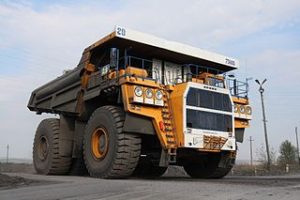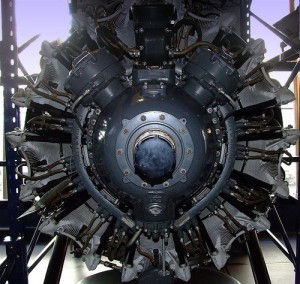Podcast: Play in new window | Download
Subscribe: Apple Podcasts |
 Aeronautical engineer Clay Coons joins us to discuss the many applications of diesel engines.
Aeronautical engineer Clay Coons joins us to discuss the many applications of diesel engines.
- Adam’s Kubota BX tractor is powered by a 23 HP diesel engine.
- During his high school years, Jeff learned that gasoline (petrol) engines don’t run too well on diesel fuel.
- Ska Punk music often features horns, as evidenced on a song Carmen remembers from his youth, Sugar in Your Gas Tank by Less Than Jake.
- Our guest for this episode is aeronautical engineer Clay Coons, who joined us previously on episodes titled Travel and Engines.
- Diesel engines use compression, rather than a spark, to ignite air-fuel mixtures.
- Modern diesel engines use turbocharging to compress the intake air being fed into the combustion chamber.
- Diesel fuel contains about 14% more energy per unit volume than does gasoline.
- Diesel engines operate at a rotational speed that is nearly half of that for a comparable gasoline engine.
- Due to their relatively heavy weight, it is rare to find a diesel engine used for aircraft propulsion.
- While nearly half the automobiles sold in Europe have diesel engines, that number is closer to 3% in the United States.
- Anemic performance and poor reliability, associated with Oldsmobile diesel engines sold during the late 1970’s and early 1980’s, has been blamed for retarding North American diesel car sales over the past thirty years .
- Adam asks about the use of diesel exhaust fluid (DEF).
- In mining applications, a diesel engine can operate 25,000 to 30,000 hours between rebuilds.
- Many heavy-duty trucks use the SAE J1939 standard for sharing information between vehicle components.
- Our guest speaks highly of the cask ales he tried on a recent trip to Scotland.
Thanks to Ilya Plekhanov for use of the photo titled “BelAZ 75600 on Bachatskom Coal Mine, Kemerovo Region.” Opening music by John Trimble, and concluding theme by Paul Stevenson.
Podcast: Play in new window | Download
Subscribe: Apple Podcasts |
 Aeronautical engineer Clay Coons explains the most common types of engines, and why each type is optimal in certain applications.
Aeronautical engineer Clay Coons explains the most common types of engines, and why each type is optimal in certain applications.
- Antidisestablishmentarianism is the longest non-technical word in the English language.
- “Suck, squeeze, bang, blow” is a mnemonic phrase for remembering the stages for a 4-stroke engine.
- For engineers not dealing with computers or software, an engine generally refers to a device that performs mechanical work.
- Our guest for this episode is Clay Coons, who appeared on Episode 30 to talk about his travel adventures.
- Jeff asks about the difference between a motor and an engine. The most common answer relates to the source of input power.
- To be specific, we can talk about heat engines, which convert thermal energy to mechanical work.
- The three most commonly produced heat engines are spark-ignition, diesel, and jet engines.
- A number of different engines have been used to power aircraft.
- A radial engine, which moves pistons radially outward from the drive shaft centerline, was frequently used in the early days of aviation (see episode photograph for an example).
- The “Mustang” P-51 fighter that saw action in World War II was powered by a water-cooled Packard V-12 (based on a Rolls-Royce Merlin engine).
- The cycles for a four-stroke spark-ignition engine are air intake (“suck”), air compression (“squeeze”), fuel combustion (“bang”), and exhaust evacuation (“blow”).
- A weed-wacker, or string trimmer, is a tool for cutting grass and plants, usually along sidewalks or garden borders.
- The ability of gasoline to resist ignition under compression is measured by its octane rating.
- Carmen makes reference to the television series Home Improvement, in which the main character was known to grunt occasionally.
- Clay explains that the reciprocating engine has remained a staple in automobiles for many years because it is reliable and economic to manufacture.
- In contrast to the reciprocation of a piston engine, a Wankel rotary engine uses a spinning Reuleaux-shaped triangle to produce the necessary compression of fuel and air.
- The Mazda RX-7 sports car famously used a Wankel engine.
- Chrysler tested a Turbine Car in the early 1960s.
- A Honeywell AGT1500 turbine engine is used to power the Abrams M-1 tank.
- Gas turbine engines have three core sections, each of which function continuously (in contrast to the discrete cycles of a reciprocating piston engine). These sections are known as the compressor, combustor, and turbine.
- Spinning blades at the front of a turbine engine, known as the compressor section, squeeze the intake air to make it more dense, thus providing more oxygen per unit volume.
- In the center of a turbine engine, the combustor mixes fuel with the compressed air, before igniting the mixture to release energy from the fuel.
- As the ignited fuel mixture rapidly expands in volume, the expanding gas rotates a set of blades known as the turbine section. These blades are connected to an axial shaft (turbine shaft) that, in turn, rotates the compressor section at the front of the engine.
- A jet engine is a gas turbine engine that uses energy from the exhaust gas to produce physical movement. Thus, a minimal amount of energy is put into rotating the turbine shaft, as the remainder is used to produce propulsive thrust.
- Jet engines use a nozzle to maximize the propulsive thrust that can be achieved from exiting combustion gases.
- A turboshaft engine is designed to maximize the amount of work that can be performed by the turbine shaft. Thus, every effort is made to maximize the efficiency of the turbine stage in recovering energy from the combustion gases and transferring it to an output power shaft.
- A supercharger is a mechanically-driven centrifugal air compressor driven by the crankshaft of a reciprocating-piston engine. Even at low speeds, it can effectively increase the density of air flowing into the engine cylinders.
- Exhaust gases spin the turbine of a turbocharger. A compressor, connected to the same shaft as the turbine, squeezes the incoming air to force additional oxygen into the engine.
- Jeff reminisces about his turbocharged four-cylinder 1984 Pontiac Sunbird.
- Due to their high thermal efficiency, diesel engines are preferred over gasoline engines for generating torque at lower speeds.
- Unlike a spark-ignition engine, a diesel engine does not add fuel until the piston is concluding its compressive stroke. The compression of the air/fuel mixture is sufficiently high to cause ignition, thus releasing energy from the fuel.
- A rocket engine is similar to a jet engine, but carries with it the oxidizer (normally oxygen) that is mixed with the fuel to allow combustion.
- The Centaur rocket stage was developed at NASA’s Lewis Research Center, where Clay once worked.
- Modern airliners use turbofan engines, which use turbine shaft power to accelerate intake air rearward, thus increasing engine thrust.
- Military aircraft use afterburners to generate a large amount of thrust, although this is not a very fuel efficient process.
- Carmen notes that the Porche Carrera GT had 10 cylinders, the Porche 917 had 12 cylinders, and a prototype 917 was tested with 16 cylinders.
- Carmen mentions getting parts from Harbor Freight Tools, a US retailer with the motto, “Quality Tools at Ridiculously Low Prices.”
- A conversation ensues about various types of torque wrenches.
- Clay mentions the car he had during his college years, a green 1975 Dodge Coronet.
- A water brake is a device that absorbs and measures shaft work.
- Jeff gets quizzed on the formula for converting torque to horsepower. Clay notes that $latex \text{HP} = (\tau\cdot\text{RPM}) / 5252$ when torque $latex \tau$ is measured in pound-feet. Jeff struggles to recall that 1 HP = 33,000 ft-lbs per minute.
- Clay reveals that his favorite beer is Caffrey’s Irish Ale.
- Carmen talks about a recent visit to Deschute’s Brewery in Portland, Oregon.
Thanks to Les Chatfield for his photograph titled “Pratt and Whitney power.” Podcast theme music by Paul Stevenson.
Practical insights for the engineering crowd
 Aeronautical engineer Clay Coons joins us to discuss the many applications of diesel engines.
Aeronautical engineer Clay Coons joins us to discuss the many applications of diesel engines.